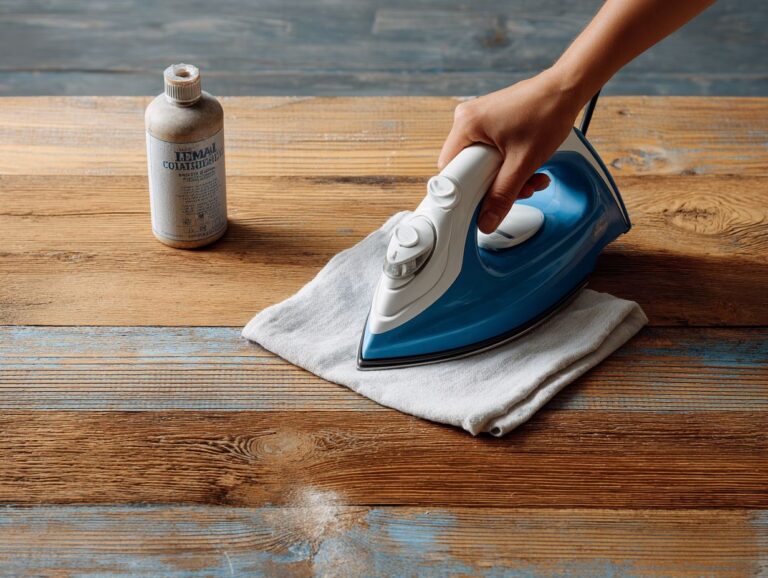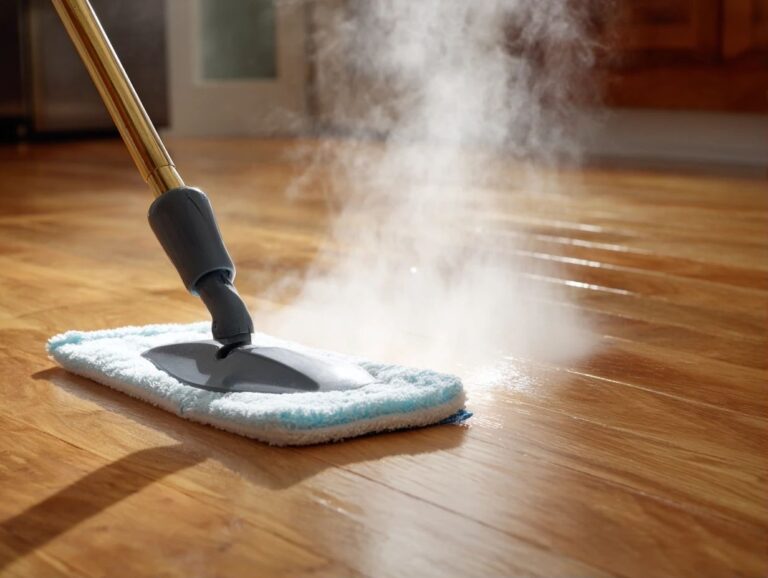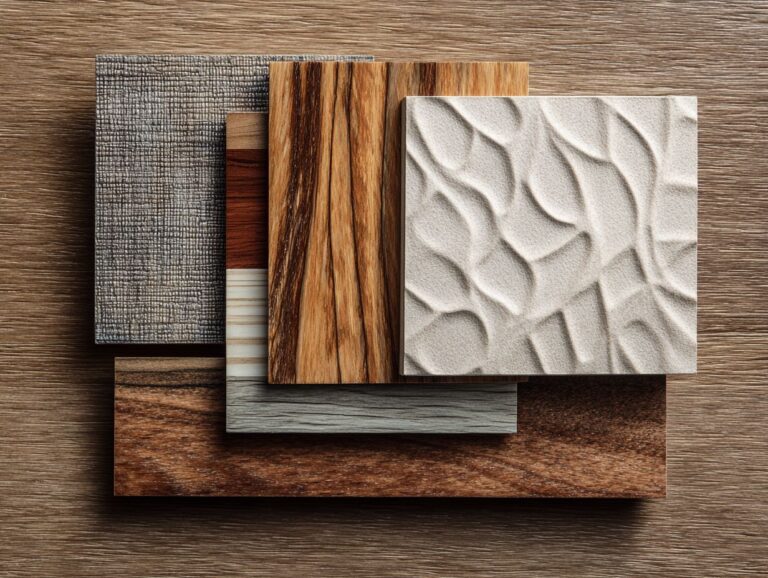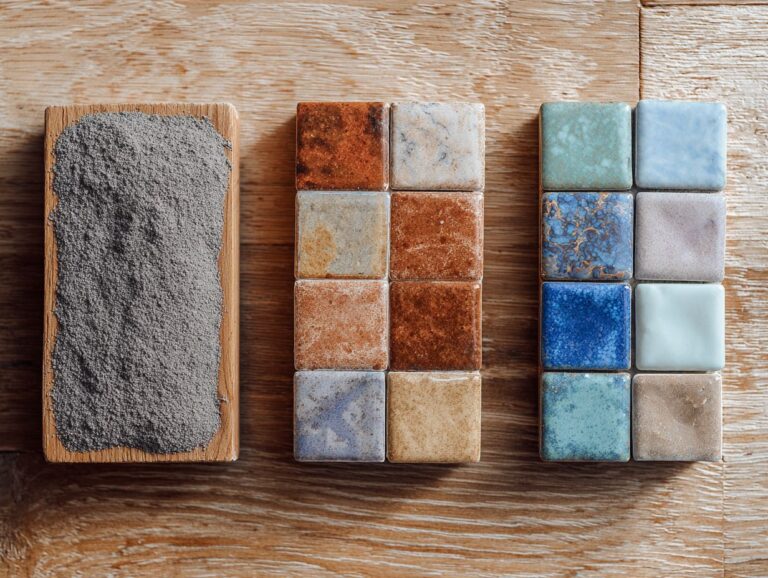Flooring for Rooms Above Garages – Insulation Issues
Contents
- Introduction to Flooring for Rooms Above Garages
- Understanding Insulation Issues
- Types of Insulation Materials
- Flooring Options and Their Insulation Properties
- Garage Floor Insulation Data
- Installation Considerations
- Impact of Climate on Insulation Needs
- Maintenance of Insulation and Flooring
- Frequently Asked Questions
- What is the best type of flooring for rooms above garages?
- Why are insulation issues important to consider when choosing flooring for rooms above garages?
- Can carpet be a good option for rooms above garages with insulation issues?
- What are some common insulation issues that can affect flooring in rooms above garages?
- How can I improve insulation in a room above my garage?
- Are there any flooring options specifically designed for rooms above garages with insulation issues?
Introduction to Flooring for Rooms Above Garages
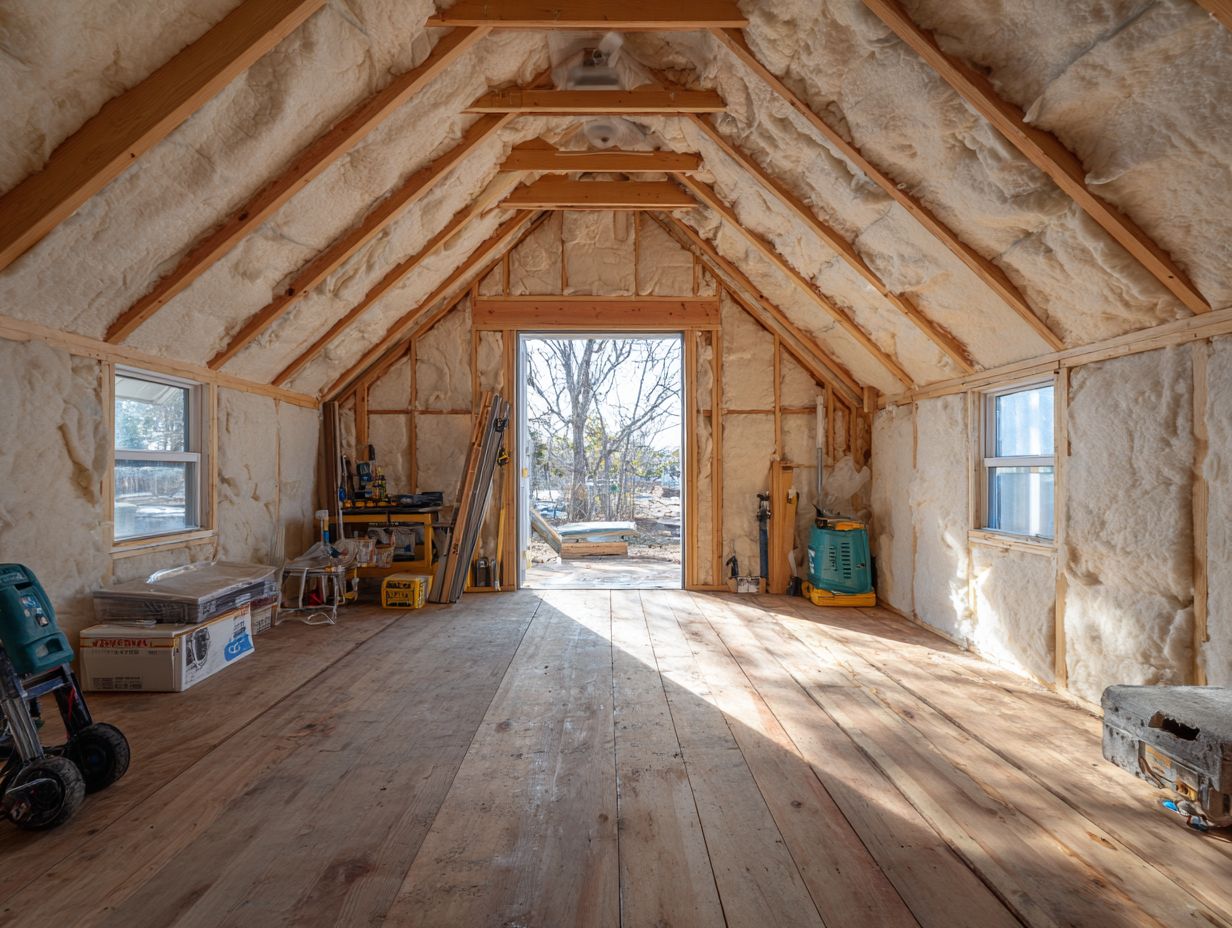
Key Takeaways:
Importance of Insulation
Proper insulation is essential for controlling temperature differences and reducing energy bills in rooms above garages, where air leakage can lead to discomfort.
Poor insulation can lead to a lot of heat loss, so it’s important to choose the right kind for your space.
Fiberglass batts are among the most common, offering a good balance of cost and performance, while spray foam insulation provides superior air sealing and fits irregular gaps. Both can save homeowners up to 20% on energy bills.
To improve how your home keeps cool, think about using radiant barriers in hot areas to reflect heat away from your living space. Talk to a professional for advice that fits your home’s unique needs.
Common Flooring Options
When selecting flooring for rooms above garages, homeowners can choose from various options, each with unique benefits and insulation properties.
Carpet provides warmth and comfort, making it ideal for bedrooms or playrooms. Hardwood floors are strong and stylish, perfect for living rooms.
Conversely, vinyl is a cost-effective, water-resistant option perfect for laundry rooms or bathrooms. The way you insulate is important; for carpet, use a padded underlay for better comfort and insulation.
On the other hand, hardwood needs time to adjust to its environment to avoid bending and last a long time. Each flooring type serves distinct needs, balancing aesthetics and functionality effectively.
Understanding Insulation Issues
Knowing typical insulation problems is important for homeowners trying to improve energy efficiency and comfort in rooms above garages.
Heat Transfer and Energy Loss
Heat movement through direct contact and air currents can decrease energy efficiency, leading to additional energy loss in rooms located above garages.
To reduce energy waste, think about putting in insulation such as fiberglass batts or spray foam, as both work well to cut down heat transfer.
For example, fiberglass batts are relatively inexpensive and offer R-values between 11 and 38, depending on thickness. Alternatively, closed-cell spray foam insulation, while pricier, provides superior air sealing and R-values up to 7 per inch.
Sealing any gaps or cracks with caulk can prevent air leaks, enhancing overall insulation effectiveness. Combining these methods can reduce energy loss by up to 50% in affected areas.
Moisture Control and Its Effects
Managing moisture is important to stop mold and mildew, which can weaken the strength of floors in rooms over garages.
- Start by identifying potential moisture sources, such as high humidity and inadequate ventilation. Consider installing vapor barriers on the garage walls and floor to prevent ground moisture from infiltrating.
- Improve ventilation by using exhaust fans or installing louvered vents to promote airflow. Investing in a dehumidifier can also help maintain optimal humidity levels.
- Check gutters and downspouts regularly to make sure they direct rainwater away from the garage, lowering the chance of moisture build-up. Together, these strategies create a drier environment and protect your flooring systems.
Types of Insulation Materials
Selecting the proper insulation can greatly improve how well rooms above garages work and feel. Consider insulation quality, and you might also want to think about flooring options for large spaces.
Think about the price and how easy it is to put in. Learn more about great room flooring ideas to enhance the functionality and comfort of your space.
Fiberglass Insulation
Fiberglass insulation, available as batts or blown-in, is one of the most common solutions for enhancing the energy efficiency of home insulation systems.
When installing fiberglass insulation, consider the R-value required for your climate zone; for example, Northern areas may need R-49, while Southern regions typically require R-30.
To install correctly, use a utility knife to cut batts and a blowing machine for loose-fill insulation. Wearing protective gear is essential to avoid skin irritation from the fibers.
A well-insulated attic can significantly reduce heating and cooling costs, often leading to savings of 10-50% on energy bills annually.
Foam Board Insulation

Foam board insulation provides excellent insulation for its size, making it a good choice for keeping rooms above garages warm, though it may cost more at first.
Installation is simple: use construction glue to stick the foam board directly to the wall studs or ceiling joists.
This glue usually costs about $1-2 per tube, and you might need a few based on how big your project is.
For optimal results, choose products with moisture resistance, such as XPS (extruded polystyrene) foam, which is ideal for humid environments.
Expect to invest approximately $1-$2 per square foot for foam board, considering the material and adhesive, but the energy savings can make it worthwhile in the long term.
Spray Foam Insulation
Spray foam insulation is excellent for stopping air leaks, making it the top choice for improving energy efficiency in rooms above garages.
- To apply spray foam insulation properly, begin by sealing any gaps and cleaning the surfaces thoroughly.
Costs typically range from $0.50 to $2.00 per board foot, depending on the type and installation method.
When applying, wear protective gear like goggles and a respirator to avoid inhalation of fumes.
For homeowners, investing in a professional service can yield significant energy savings, particularly in colder climates where draft prevention is critical.
For example, an attic treated with spray foam can reduce energy bills by up to 30%.
Flooring Options and Their Insulation Properties
The type of flooring you select can greatly affect both the insulation and comfort of rooms above garages.
Garage Floor Insulation Data
Garage Floor Insulation Data
Insulation Benefits and Costs: Thickness Requirements for Insulation
The Garage Floor Insulation Data gives information on suggested thickness for different insulation materials used in garage floors. Knowing these details is key for improving energy use and comfort in garage areas, which can greatly affect the home’s overall heat management.
Insulation Benefits and Costs detail the recommended thicknesses for different types of insulation materials. The data highlights three main options:
- Rigid Foam: Recommended at 100 mm Rigid foam boards are popular for garage floor insulation because they resist heat flow well and do not absorb moisture. Their durability and ease of installation add to their appeal, providing long-term energy savings.
- Mineral Wool: Also recommended at 100 mm, mineral wool offers superb fire resistance and soundproofing qualities. Its structure provides effective insulation and is particularly useful in environments where noise reduction is a priority, alongside thermal management.
- High-performance Foam: With a recommended thickness of 70 mm, high-performance foam offers superior thermal efficiency due to its higher R-value per inch compared to other materials. This allows it to provide the required insulation performance with a thinner layer, saving space and potentially reducing material costs.
The data shows how important it is to select the correct insulation thickness and material based on specific needs, such as heat control, soundproofing, and space restrictions. By adhering to these recommended thickness levels, homeowners can achieve better energy efficiency, comfort, and cost-effectiveness in insulating their garage floors.
Carpet and Underlay
Carpet with a quality backing can keep a room cozy and lessen noise, making it a popular choice for making spare rooms comfortable.
For optimal results, consider a 15-20 oz. pile carpet, priced between $2 and $5 per square foot. This weight helps reduce noise, especially in areas where lowering sound is important.
Using a thick underlay like rubber or felt (priced between $0.75 to $2 per square foot) improves sound absorption. By purchasing these products, you make the room more comfortable and improve its sound quality, creating a peaceful space for relaxing or enjoying entertainment.
Hardwood Flooring
Hardwood flooring looks good, but it needs proper installation to keep its insulation and resist moisture problems.
To improve insulation performance, begin by installing a foam underlayment, which costs about $0.50 to $1.00 per square foot. This layer gives warmth and blocks moisture.
Make sure the subfloor is clean and dry before you start installing; fixing cracks with a leveling compound can prevent moisture from getting in. It’s wise to allow the hardwood to acclimate in the room for at least 48 hours, reducing the risk of warping post-installation.
Such careful steps can significantly prolong your flooring’s lifespan.
Tile Flooring
Tile flooring is a durable option that can be beneficial in moisture-prone areas but may require additional underlayment for better insulation.
For proper installation, consider using a thin-set mortar application, which typically costs between $3 to $10 per square foot. This method offers excellent adhesion and durability.
It’s also essential to choose an underlayment that’s suitable for your climate; for instance, a polyethylene foam will provide moisture protection and insulation against temperature fluctuations. Be cautious in cold environments, as certain materials may contract and crack more easily.
Cleaning up spills right away can help keep the tiles lasting longer.
Vinyl Flooring
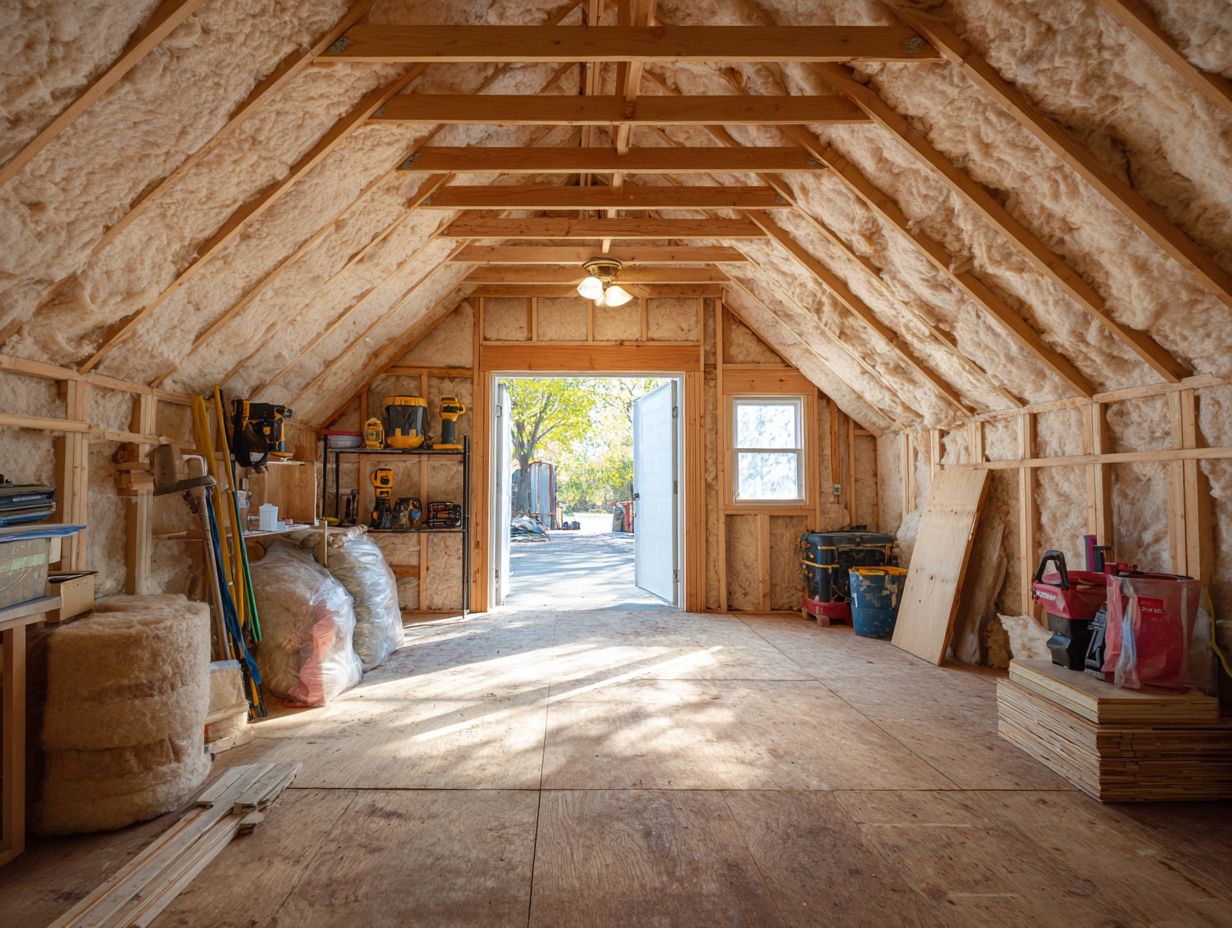
Vinyl flooring offers a cost-effective solution with decent insulation properties and is ideal for high-traffic areas like kids’ playrooms or home offices.
When choosing vinyl flooring, consider the difference between luxury vinyl and standard options.
Luxury vinyl, costing about $4-$8 per square foot, offers strong durability and looks similar to wood or stone. Standard vinyl is affordable, starting at $2 per square foot, though it is not as durable.
Both types are great at resisting moisture, so they work well in kitchens and bathrooms.
Maintenance is effortless; simply sweep and mop regularly to keep it looking fresh.
Your decision should consider both your taste and practical needs.
Installation Considerations
Installing correctly is important to make sure the flooring and insulation work well and to avoid problems later that could happen with bad installation.
Subfloor Preparation
Ensuring a level, clean subfloor is essential for optimal flooring performance and insulation effectiveness in rooms above garages.
- Start by using a moisture meter to check for dampness, which gives an exact measurement of the subfloor’s humidity level. If readings exceed 12%, allow for adequate drying through ventilation or dehumidification.
- Next, check that the surface is even by using a long level or a straight board to find any raised or sunken areas.
- For cleaning, sweep and vacuum the area thoroughly, then mop with a damp cloth to remove dust and debris.
This setup usually requires 2-4 hours and is necessary for a good flooring installation.
Insulation Installation Techniques
Using the correct techniques for insulation installation can noticeably improve energy efficiency and comfort in rooms above garages.
- Start by ensuring a continuous air barrier to prevent drafts. Seal all gaps with caulk or weatherstripping, particularly around windows and doors.
- When installing fiberglass insulation, overlap seams to minimize thermal bridging, and use sturdy staples or adhesive to secure it. For hard-to-reach areas, consider spray foam insulation, which expands and fills gaps effectively.
- Typically, this process for a medium-sized room above a garage can take 1-2 days, depending on the complexity and your experience level.
Impact of Climate on Insulation Needs
Climate significantly affects the choice of insulation and materials needed for the best results in rooms located above garages.
Cold Climate Considerations
In cold climates, insulation must address significant heat loss, often requiring higher R-values to maintain comfort and efficiency.
To achieve effective insulation, consider using spray foam, fiberglass batts, or cellulose.
Spray foam seals air effectively and offers an R-value of 6-7 per inch, making it a good option for attics and crawl spaces. Fiberglass batts are cost-effective and widely available, with R-values around 3.1-4.3 per inch, suitable for walls and floors.
In Amanda Emery’s Michigan home, the installation of spray foam reduced heating costs by 30% during winter months. Evaluating local suppliers can also help secure competitive pricing and professional installation services.
Hot Climate Considerations
In hot climates, insulation strategies should focus on preventing heat from entering the space to maintain comfort and reduce energy costs.
Two effective insulation options include reflective barriers and foam board.
Reflective barriers, typically installed in attics, can reduce heat gain by reflecting radiant heat away from living areas; installation costs range from $0.15 to $0.30 per square foot.
On the other hand, foam board provides excellent thermal resistance and is ideal for basement walls or exterior applications, with prices averaging between $0.50 and $2 per square foot.
For installation, make sure surfaces are clean and dry. You can use glue or screws to keep it in place securely.
Maintenance of Insulation and Flooring
Regular upkeep of insulation and flooring is essential to keep energy use low and extend how long they last. For those managing spaces like basements, understanding the diverse range of basement subfloor systems can be key to optimizing insulation and flooring longevity.
Regular Inspections
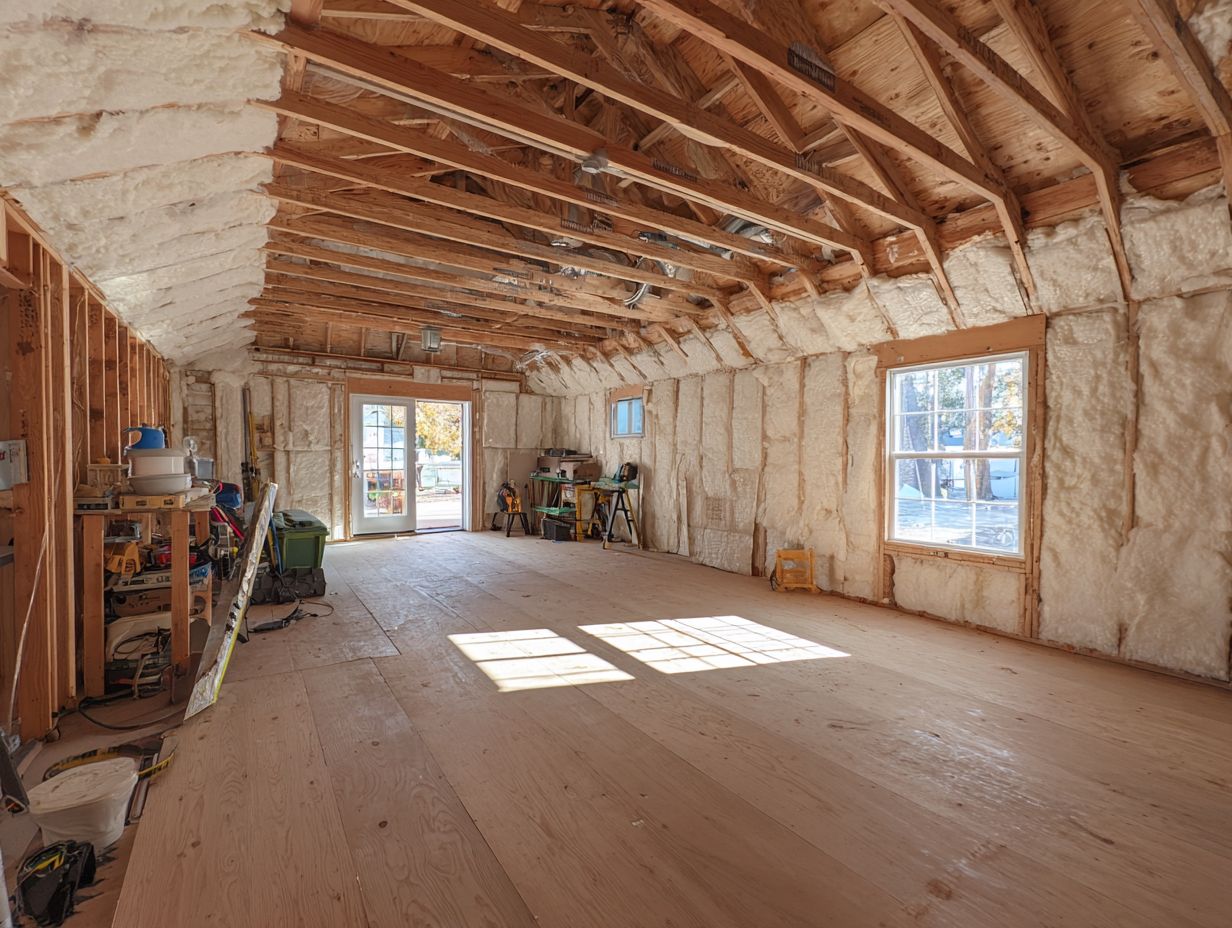
Regular checks can find problems with insulation and flooring early, stopping expensive fixes in rooms over garages.
To complete a detailed check, follow this list:
- Start by looking for signs of moisture, such as water stains or damp patches on walls and ceilings.
- Next, check the insulation integrity, ensuring it isn’t compressed or missing, as this can affect energy efficiency.
- Monitor for mold and mildew, which can thrive in poorly ventilated spaces.
- Use a moisture meter to get correct readings and think about getting a dehumidifier if the humidity is too high.
This proactive approach can save you significant expenses in the long run.
Repairing Insulation Damage
It’s important to fix insulation damage quickly to avoid higher energy bills and possible harm to the building structure.
- Begin by identifying the type of insulation damaged: fiberglass, foam board, or spray foam.
- For fiberglass batts, simply remove and replace affected sections, which typically costs around $0.75 to $1.50 per square foot.
- If using foam board, cut a new piece to fit snugly, ensuring a proper seal with spray foam adhesive.
- To fix spray foam insulation, take out the worn part and put on a new layer, following the manufacturer’s guidelines for the best outcome.
- Always examine for water sources to stop any upcoming harm.
Frequently Asked Questions
What is the best type of flooring for rooms above garages?
The best type of flooring for rooms above garages will depend on various factors, such as insulation, moisture levels, and personal preferences. Some popular options include carpet, hardwood, and laminate flooring.
Why are insulation issues important to consider when choosing flooring for rooms above garages?
Insulation issues are important to consider because rooms above garages are typically not directly connected to the home’s central heating and cooling system. As a result, they may be more susceptible to temperature changes and require proper insulation to maintain a comfortable living environment.
Can carpet be a good option for rooms above garages with insulation issues?
Yes, carpet can be a good option for rooms above garages with insulation issues. It can help insulate the space and provide warmth and comfort underfoot. Choosing a quality carpet with thick padding is key for proper insulation.
What are some common insulation issues that can affect flooring in rooms above garages?
Some common insulation issues that can affect flooring in rooms above garages include air leaks, inadequate insulation, and moisture problems. These issues can lead to temperature fluctuations, drafts, and potential damage to flooring materials.
How can I improve insulation in a room above my garage?
To improve insulation in a room above your garage, you can consider adding insulation to the walls and ceiling, sealing any air leaks, and installing weatherstripping on doors and windows. It may also be beneficial to consult a professional for a thorough evaluation and recommendations.
Are there any flooring options specifically designed for rooms above garages with insulation issues?
Yes, there are some flooring options specifically designed for rooms above garages with insulation issues. For example, some laminate flooring products come with built-in underlayment that provides additional insulation. Some carpet brands also provide padding with better insulation features.
